Hot on the heels of the launch of an updated Oiz cross-country full-suspension race bike, Orbea has released a new version of its XC hardtail, the Alma.
While the Oiz effectively received a refresh, rather than re-build, the Alma's frame is all-new for 2021, built for 100mm forks, 29in wheels and available with Hydro aluminium, mid-range OMR carbon and high-end OMX carbon options. Bikes will be priced between €899 and €7,499.
XC fit for the future
Cross-country racing certainly seems to be on an upward trajectory, perhaps reinvigorated by increasingly technical courses and closer racing, along with the development of XC bikes that are far more capable than they were back in the day.
The Alma is one of numerous new XC race bikes to be launched in 2020, including the latest Specialized Epic and the updated Cannondale Scalpel.
While full suspension bikes tend to make more headlines, Orbea believes there are still many racers looking for a hardtail bike – arguing that they're either purists looking for the lightest possible option, or are looking for race bikes with fewer complexities, and therefore better reliability.
Taking this all in to account, hardtails still need to be capable on more technical courses, so geometry and frame features are changing to reflect this – namely with slacker head angles and improved compliance in frames.
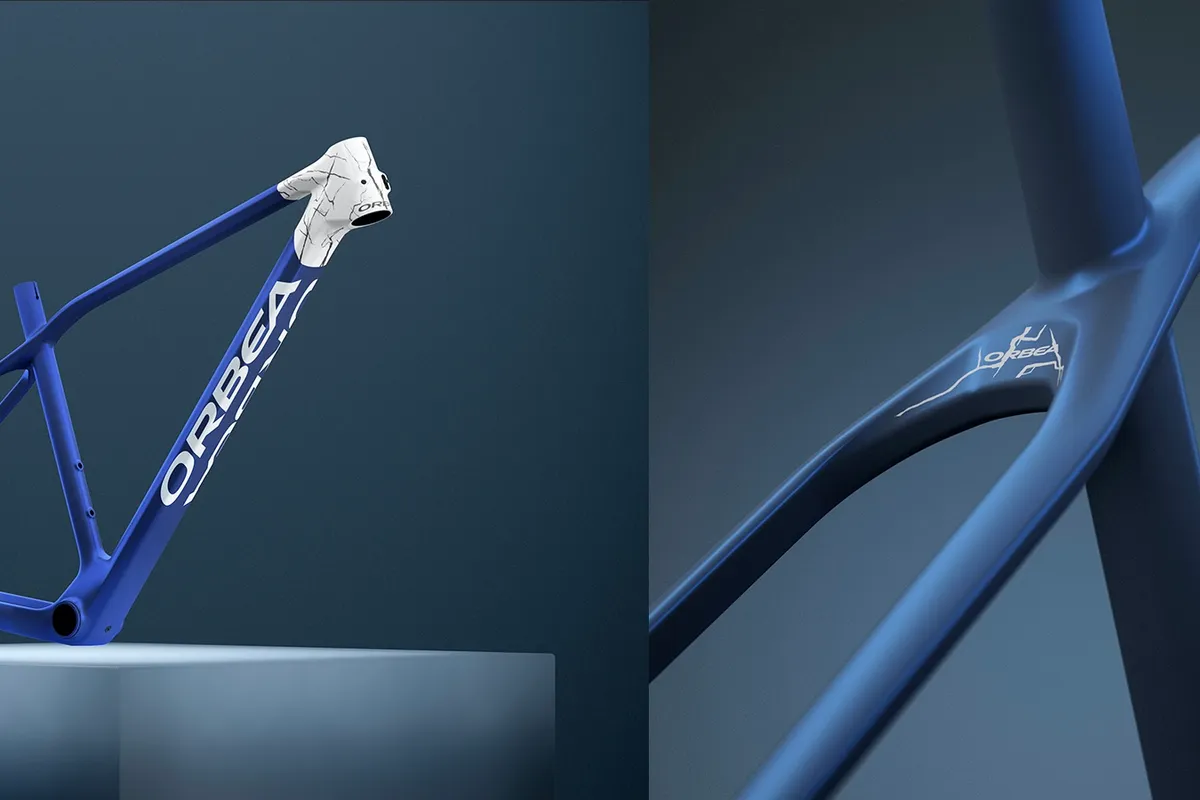
Blending comfort and stiffness
Comfort and stiffness are two competing requirements for an XC frame. Power transfer and accurate handling are key to making the bike as efficient as possible, but comfort is needed to reduce fatigue.
Orbea says it's designed the frame to give both.
The head tube, down tube and chainstays are designed to be as stiff as possible, resisting twisting forces, to ensure that your pedalling efforts aren't wasted, and making sure the bike doesn't feel flexible.
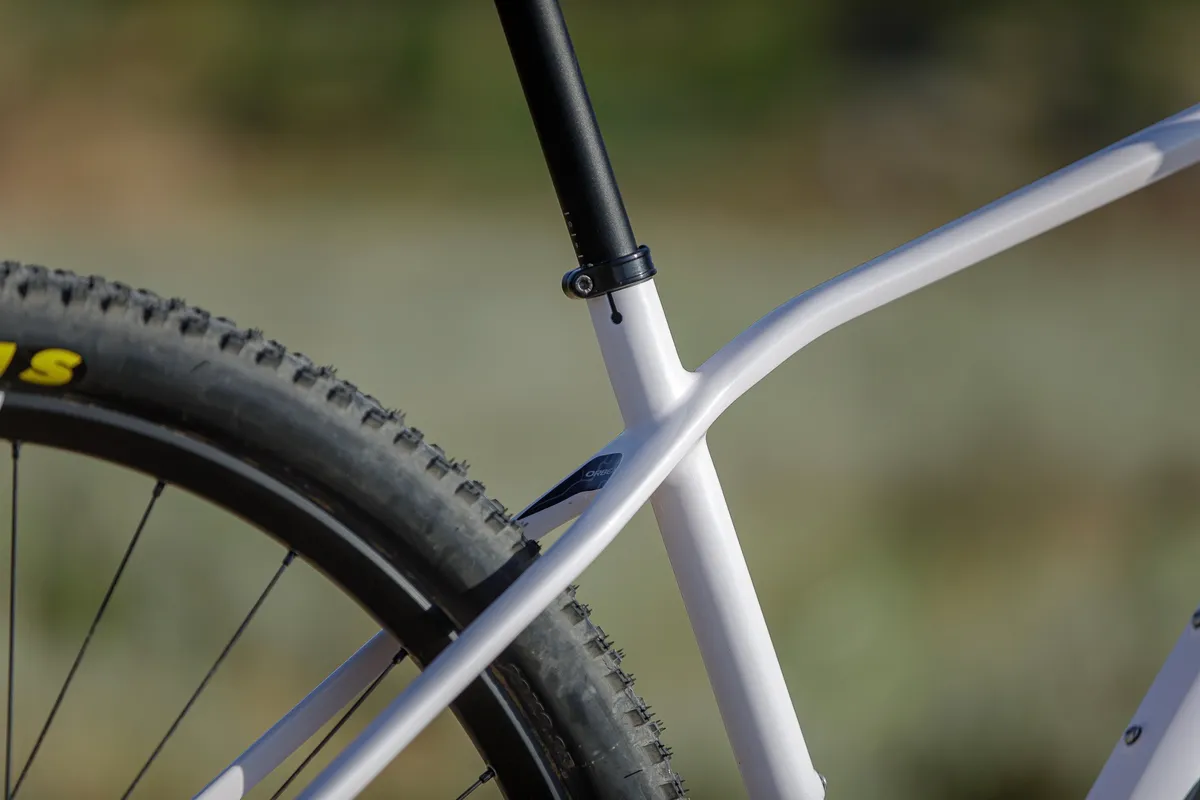
This leaves the seatstays and top tube. These are thinner, and designed to flex more, giving the bike its compliance and, therefore, comfort.
The top tube is thicker towards the head tube, helping to keep the front triangle stiff for that accurate handling, but the tubes taper towards the top tube/seat tube junction.
Added to this is the use of a 27.2mm seat post, which deflects more than a wider diameter post.
For riders looking to run a dropper post, Orbea will be offering its OC Dropper in this skinnier format. We're seeing increasing numbers of 27.2mm diameter dropper posts on the market, in response to the growing demand from the gravel market.
Orbea Alma frame materials
Orbea is offering the Alma in three different frame materials.
The top-end models will be built with Orbea's new OMX carbon fibre. This is a higher modulus carbon fibre just starting to appear in the company's mountain bike frames. Sheets of the material are laser cut to ensure only the material needed is present in the frames. Sheet overlap is minimised to help reduce weight.
As we saw with the Oiz frames built with OMX carbon, the Alma OMX frames receive the flat-mount brake mount standard. Borrowed from the road bike world, this system is a touch lighter – expect to see it more on XC bikes in the future.
Orbea claims a size medium OMX frame weighs 830g, which puts it in the same league as some of the other lightest XC hardtail frames on the market, such as the Specialized Epic HT (790g claimed frame weight).
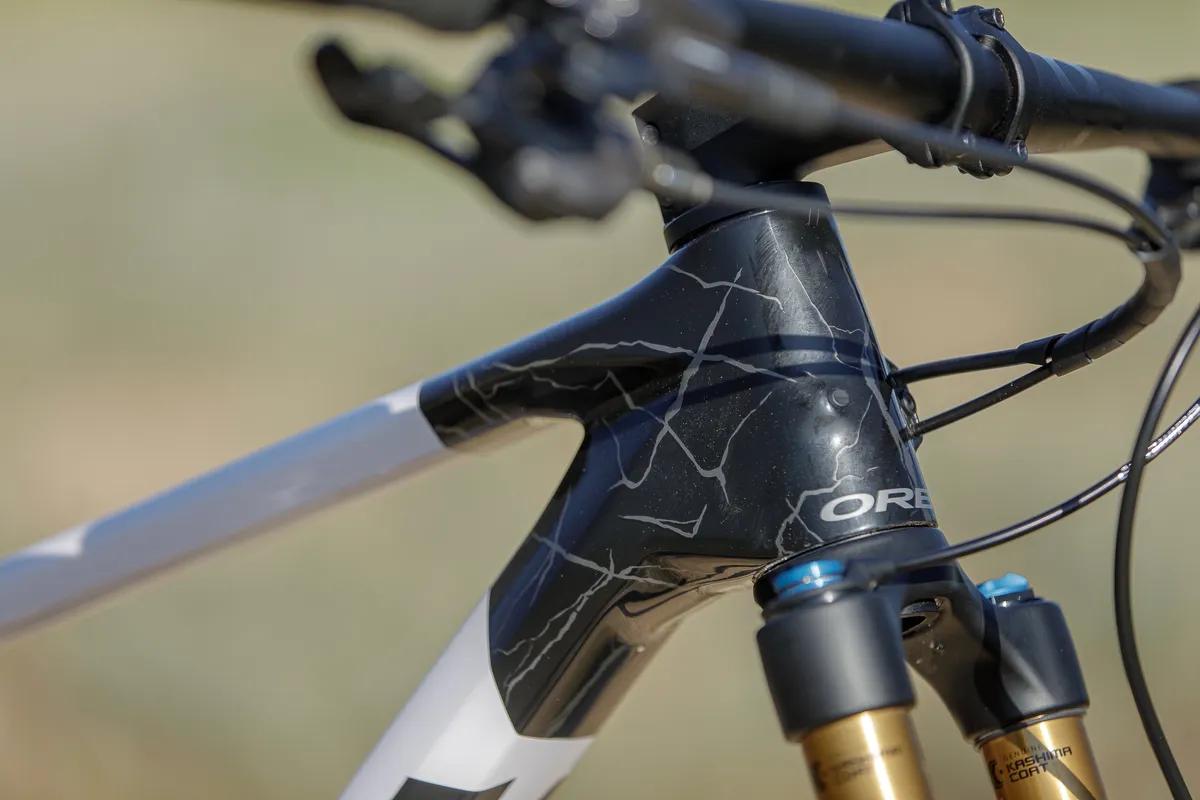
Next up are the frames built from Orbea's OMR carbon.
This is a slightly lower grade carbon than OMX, with the frames coming in a touch heavier. OMX is the carbon found on the bulk of Orbea's previous-generation XC race bikes, but it still produces a strong and light frame. Claimed weight is 1,100g, again for a medium frame.
The entry-level Almas will be constructed from Orbea's Hydro aluminium material.
This is a hydroformed aluminium tubeset, where the shapes of the tube are manipulated via high-pressure fluid, to get the shape needed to reduce flex while also increasing strength.
The walls of the tubes are butted – thickness changes along the length of the tube – to help reduce weight. Orbea smoothes out the welds of these frames, not only to improve the look, but also to reduce stress at joints.
The Hydro frames are a little taller than the carbon frames, reflecting their slightly less aggressive nature, and designed for slightly less experienced riders. These alloy frames come in at a claimed 1,650g for a medium.
Orbea Alma frame details
As expected, there are a number of frame details that Orbea has included to make it easier to live with the bike.
Internal cable routing is designed for both mechanical and electronic groupsets, with expanding wedge guides to keep the cables fixed in place and rattle free. The bottom bracket is a PF92 system, while Orbea is using a universal derailleur hanger for easy replacement.
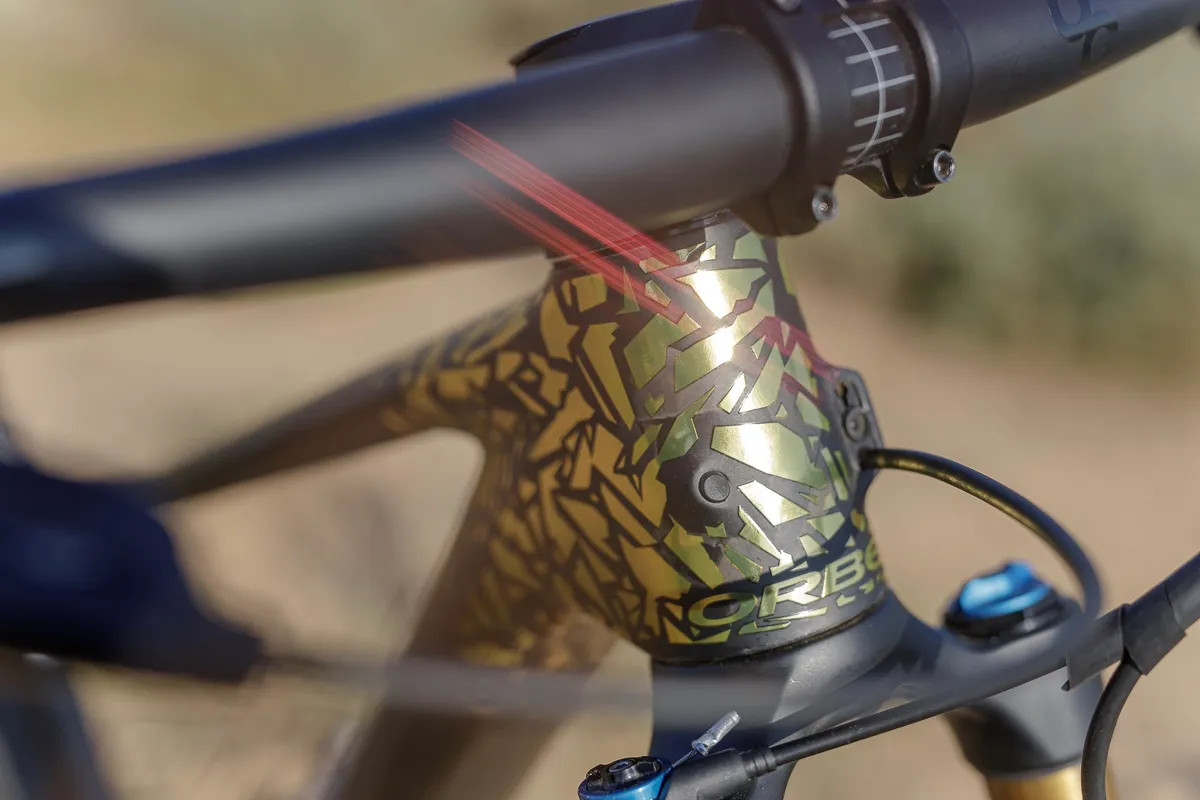
Chain security is bolstered by a (removable) chain guide, while there's a Blocklock headset system to prevent the forks swinging round in a crash and damaging the down tube.
As we saw on the Oiz, there's a semi-integrated cockpit setup, whereby the stem spacers, stem and optional GPS mount are all shaped to give a unified look.
Orbea is offering a lifetime warranty on the frame
Orbea Spirit fork
While the bulk of riders will opt for a suspension fork, Orbea believes there are still plenty who may want the 500g Spirit rigid fork.
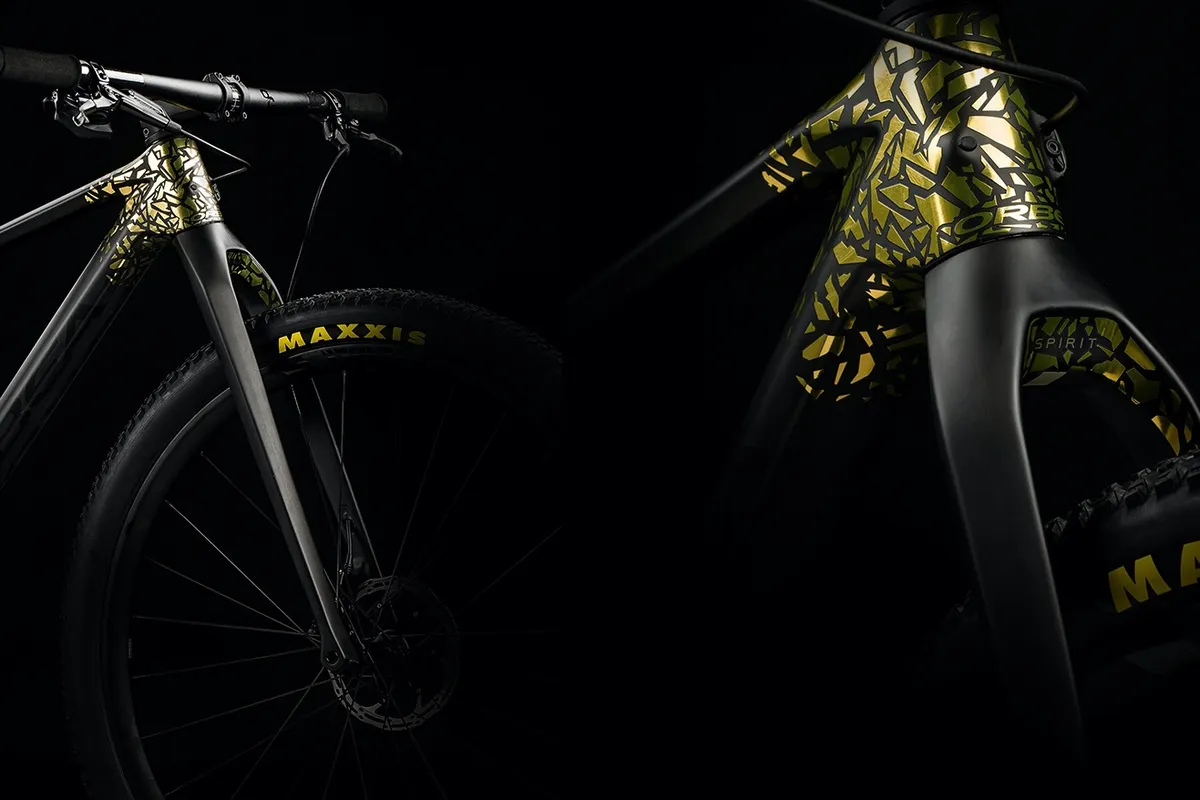
The fork itself has an axle-to-crown measurement of 501mm, designed to replicate the length of a 100mm suspension fork at 20 per cent sag, and to keep the geometry of the bike as it would be with a traditional suspension fork installed.
Hose routing is internal, and leads to a 160mm post-mount bracket. The base of the fork has a pair of rubber fork-end protectors, should you rest the fork on the ground without the wheel in place.
The Spirit fork is an option with the MyO program, which lets you swap certain components for others at the point of purchase on Orbea's website, to either customise aspects of your bike's specification, or suit your budget.
You can also alter the bike's paintjob. Numerous areas of the frame can be changed with a broad range of colour options. And new for 2021 are a number of graphic options to make your bike unique, such as 'marble' and 'geometric camouflage'.
Orbea Alma geometry
The two carbon frames (OMX/OMR) share the same geometry, while the aluminium Hydro frames have a slightly different shape. The key figures are listed below.
Orbea Alma OMX and OMR geometry (large)
- Reach: 448mm
- Head angle: 68 degrees
- Seat tube angle: 74.5 degrees
- Seat tube length: 483mm
- Chainstay length: 430mm
- Wheelbase: 1144mm
- Stack: 612mm
- Bottom bracket height: 309mm
Orbea Alma Hydro geometry (large)
- Reach: 448mm
- Head angle: 68 degrees
- Seat tube angle: 74.5 degrees
- Seat tube length: 483mm
- Chainstay length: 435mm
- Wheelbase: 1152mm
- Stack: 621
- Bottom bracket height: 309mm
Orbea Alma models
Orbea will be offering eleven models of the Alma, with three OMX bikes, four OMR bikes and four aluminium models.
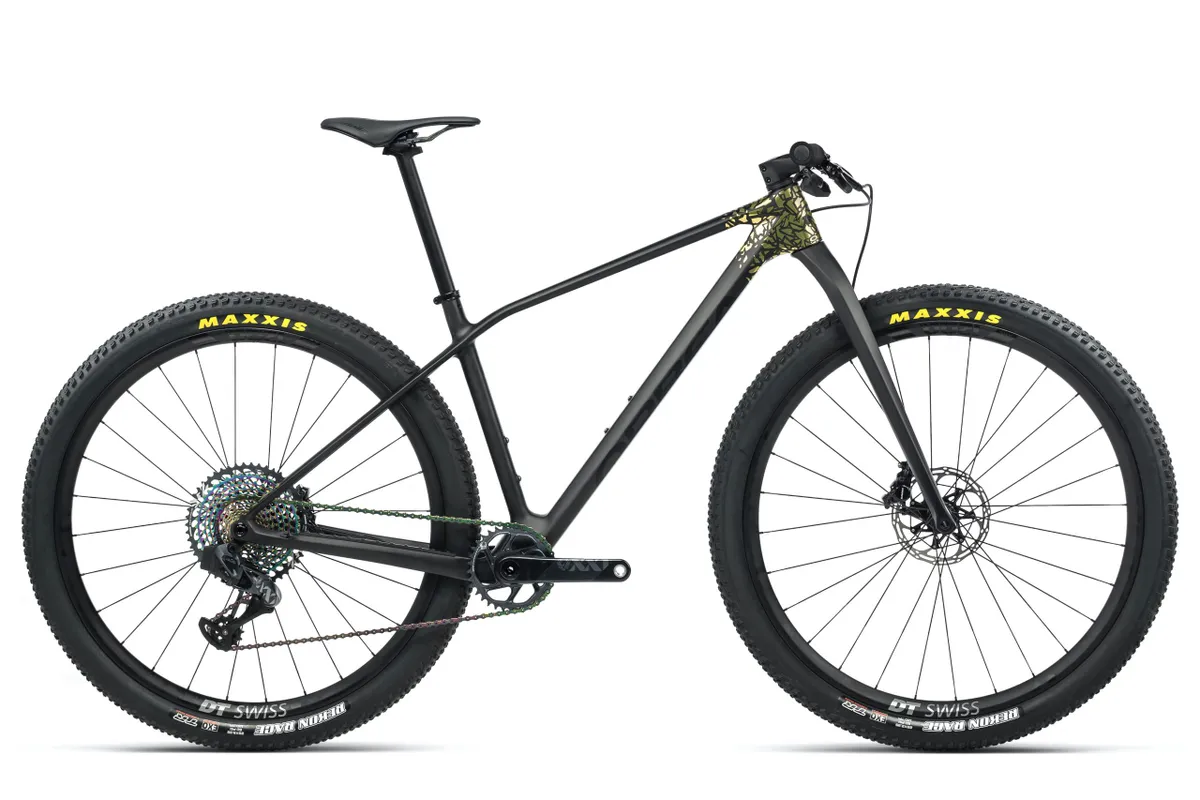
The top-level bike will be the Alma M-LTD (£6,799 / $7,999 / 7,499).
It comes with the OMX carbon frame and Spirit fork (a Fox Factory 32SC is an option via MyO), a SRAM XX1 AXS wireless drivetrain and Level Ultimate brakes, DT Swiss XRC1200 Spline carbon wheels and a carbon finishing kit from Orbea.
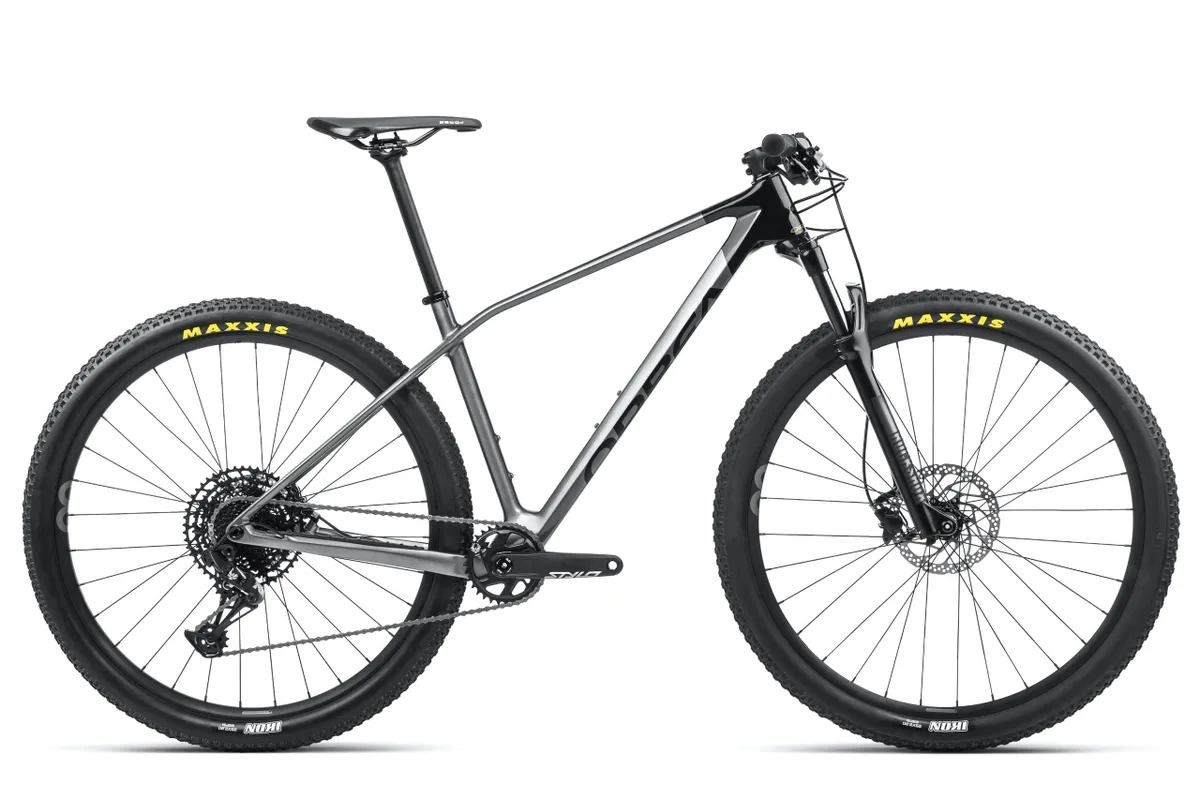
The entry-level carbon bike, the Alma M50 (£1,499 / $1,999 / €1,699) has the OMR carbon frame, a RockShox Judy Silver fork, a Shimano Deore/Deore XT 12-speed drivetrain and MT201 brakes, plus Orbea-branded alloy wheels and finishing kit.
The Alma aluminium range starts with the Alma H50 (£799 / £1,099 / €899), with the Hydro frame, a RockShox Judy Silver fork, Shimano Deore groupset, and Orbea alloy wheels and finishing kit.
